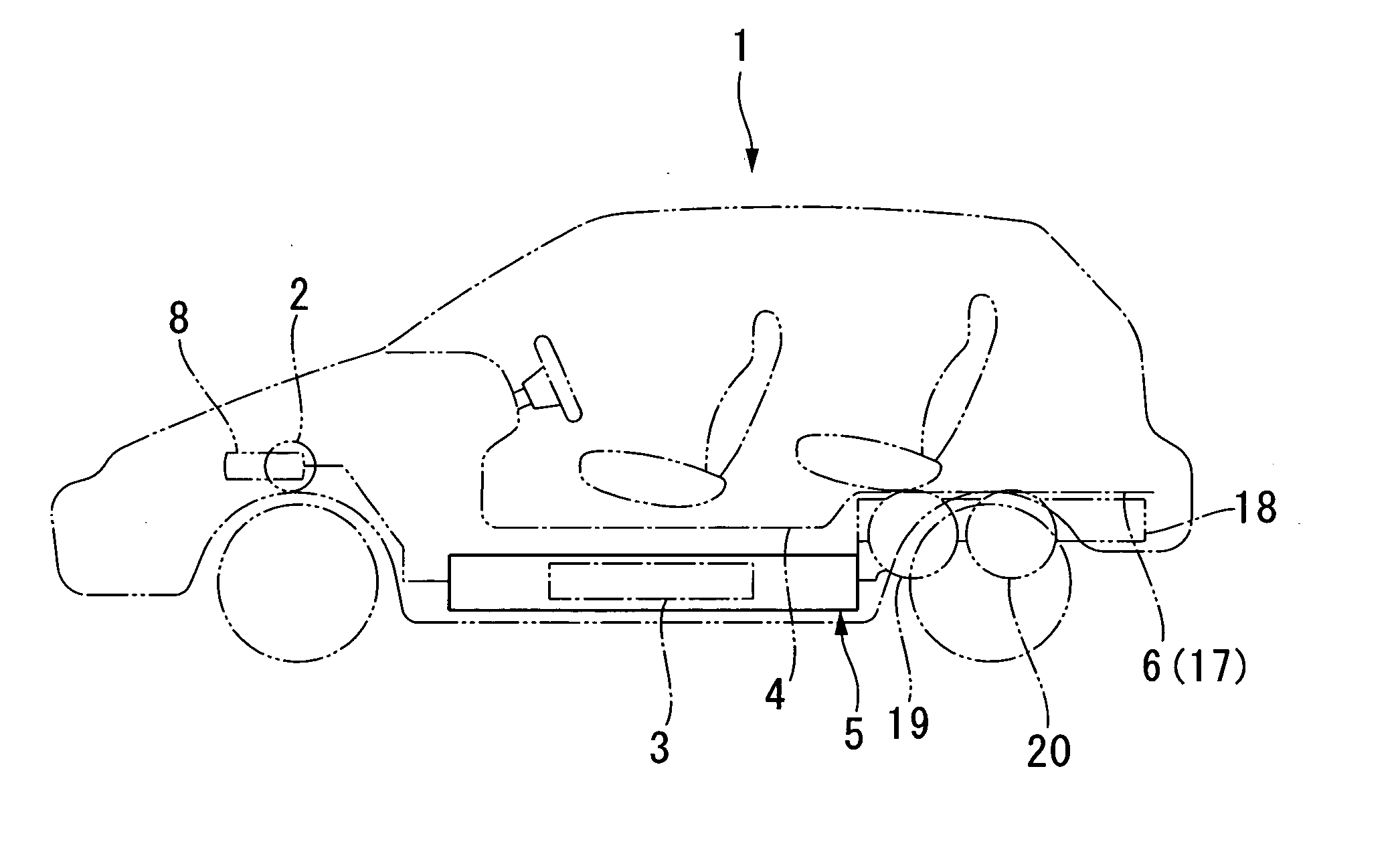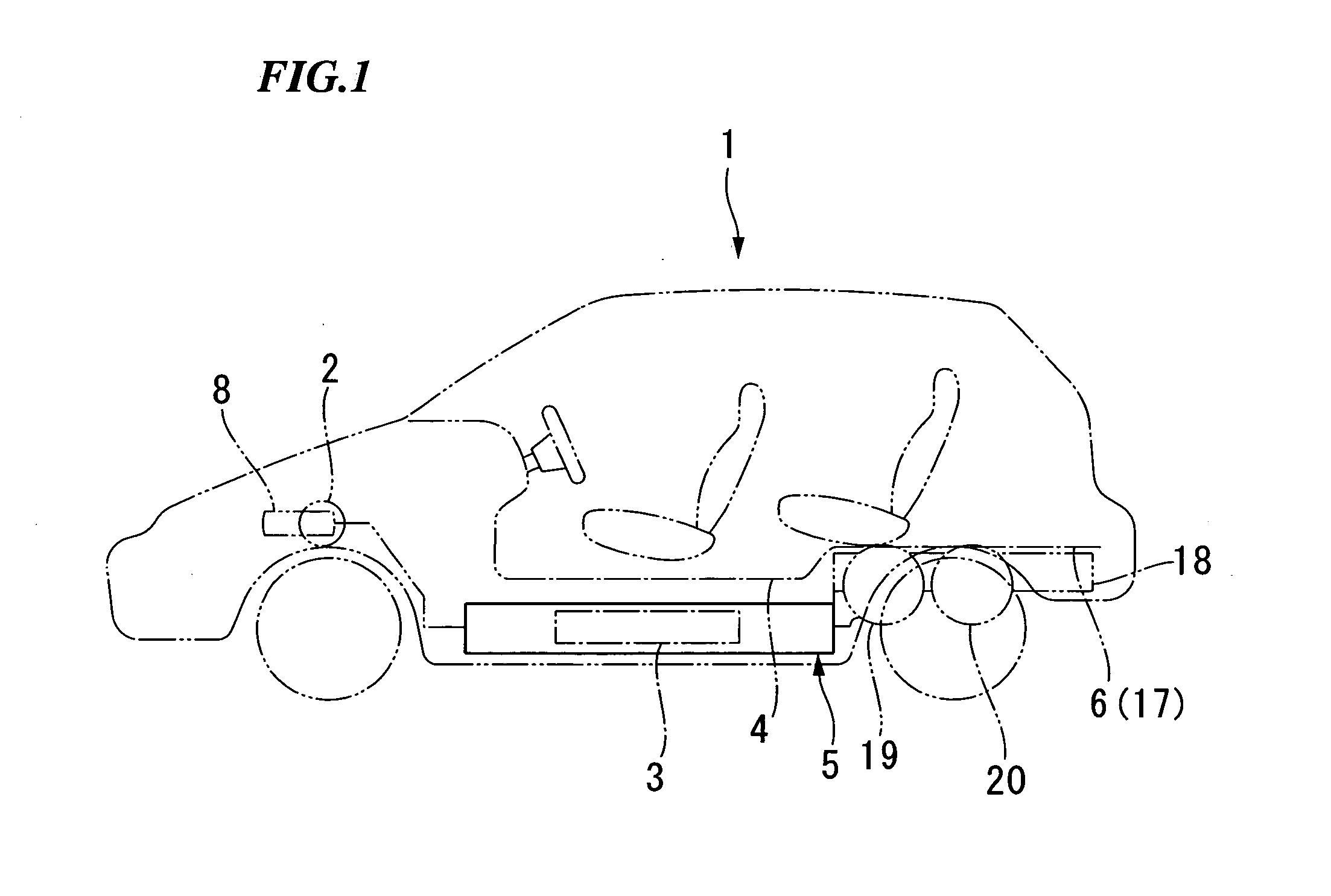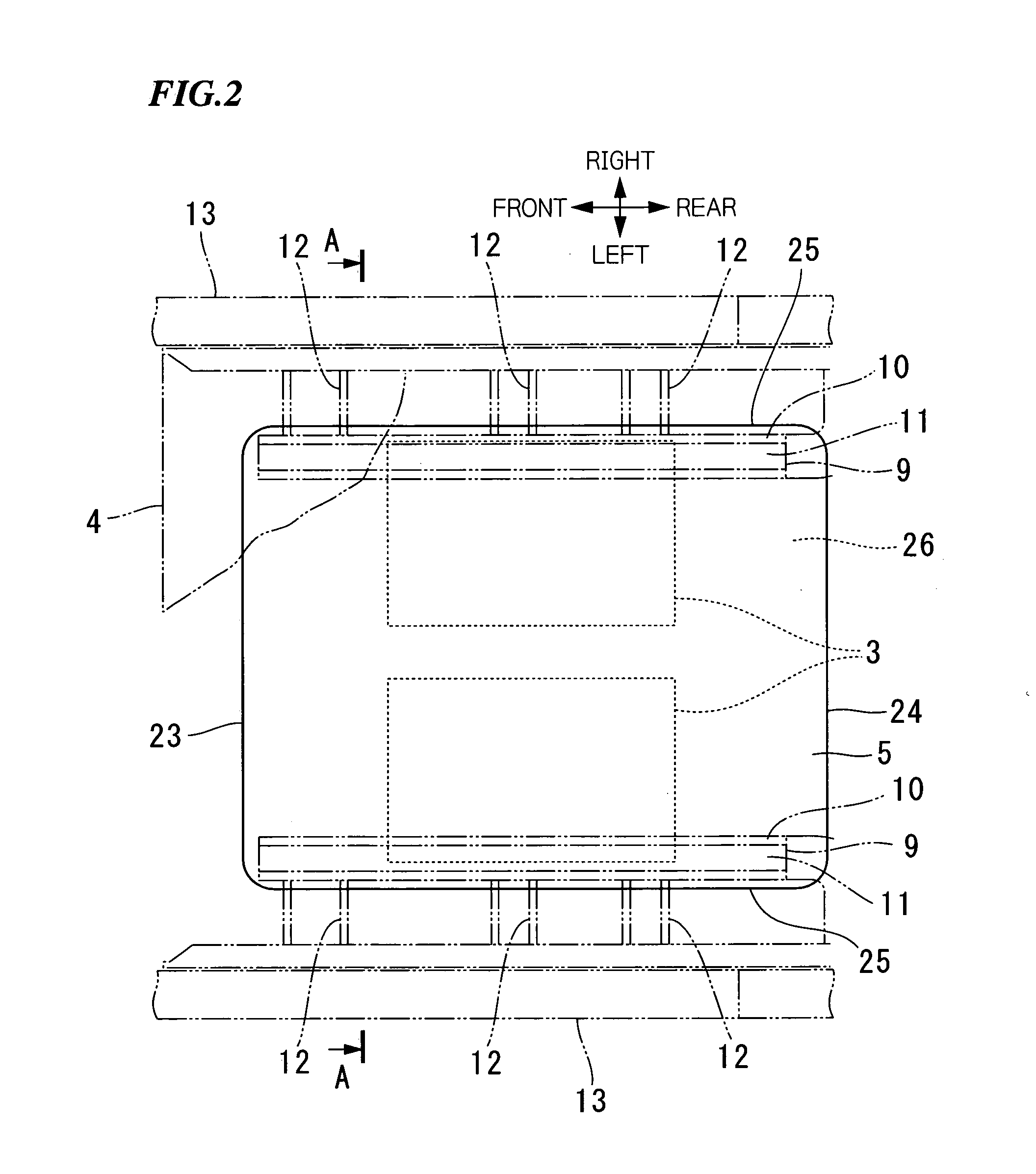Fuel cell vehicle
a fuel cell and vehicle technology, applied in the direction of cell components, electrochemical generators, cell component details, etc., can solve the problems of difficult mounting position of the mount member, inability to fully secure the support rigidity relative to the housing case of the fuel cell, and quiet sound
- Summary
- Abstract
- Description
- Claims
- Application Information
AI Technical Summary
Benefits of technology
Problems solved by technology
Method used
Image
Examples
first embodiment
[0048] Next, the invention is explained with reference to drawings.
[0049] As shown in FIG. 1, the fuel cell vehicle 1 mounts fuel cells 3 that generate electricity by the electrochemical reaction of hydrogen and oxygen, and the motor is driven and movement occurs by the power produced from the generation of electricity. The fuel cell 3 is housed inside the fuel cell system box (casing) 5 that is installed on the bottom face of the front floor 4. Power generation is conducted by the hydrogen gas supplied from the hydrogen tanks 19 and 20 arranged under the rear floor 6 in the rear part of the carbody and by the oxygen in the air supplied from the compressor 8 provided in the front part of the carbody.
[0050] As shown in FIG. 2 and FIG. 3, the main frames 9 with a hat-like sectional form are joined via the flanges 10 to both the left and right sides of the bottom face of the front floor 4. The carbody skeleton 11 is formed in the longitudinal direction of the carbody with the main fra...
second embodiment
[0077] In the aforementioned second embodiment, the fuel cells 3 are supported by the front stack frame 231 and rear stack frame 232 provided in the widthwise direction of the vehicle on the bottom wall 226 of the box body 221 such that the fuel cells 3 are straddled by the side reinforcements 229. Accordingly, the fuel cells 3 are supported by the skeletal part 228 formed by the side reinforcements 229 in the longitudinal direction of the vehicle and by the skeletal part 235 formed by the front stack frame 231 and rear stack frame 232. Consequently, it is possible to reliably and stably fix the fuel cells 3 to the fuel cell system box 5.
[0078] With the aforementioned second embodiment, the sandwich panels 241 are connected so as to be straddled by the front stack frame 231 and rear stack frame 232 underneath the fuel cells 3, the spaces 240 are formed between the sandwich panels 241 and the bottom wall 226 of the box body 221, and these spaces 240 are filled with the anti-vibration...
third embodiment
[0102] With the third embodiment, hydrogen gas with lower specific gravity than air is measured by the hydrogen sensor 348 at the highest position inside the fuel cell system box 5 that is advantageous for measurement accuracy, with the result that measurement accuracy can be increased. In particular, as the hydrogen sensor 348 is positioned at the highest area in the bottom face of the lid 322, it is acceptable to use only one hydrogen sensor 348, and it is possible to bring about cost reductions compared to the case where a plurality of hydrogen sensors 348 are used.
[0103] In short, the effective height of the bottom face of the lid 322—that is, of the fuel cell system box 5—is adjusted by the first spacer S1, second spacer S2 and third spacer S3, with the result that hydrogen gas is gradually guided to the higher elevations of height H1, height H2 and height H regardless of the area where hydrogen gas exists, and that the hydrogen concentration is reliably and accurately measured...
PUM
 Login to View More
Login to View More Abstract
Description
Claims
Application Information
 Login to View More
Login to View More - R&D
- Intellectual Property
- Life Sciences
- Materials
- Tech Scout
- Unparalleled Data Quality
- Higher Quality Content
- 60% Fewer Hallucinations
Browse by: Latest US Patents, China's latest patents, Technical Efficacy Thesaurus, Application Domain, Technology Topic, Popular Technical Reports.
© 2025 PatSnap. All rights reserved.Legal|Privacy policy|Modern Slavery Act Transparency Statement|Sitemap|About US| Contact US: help@patsnap.com



